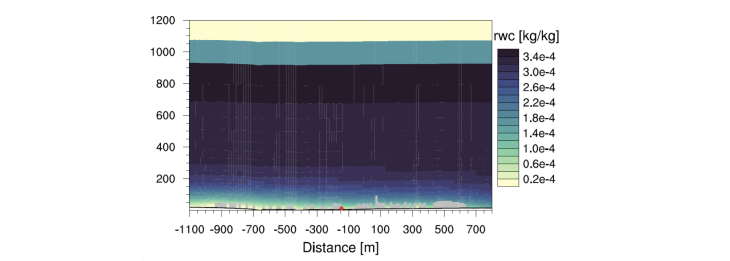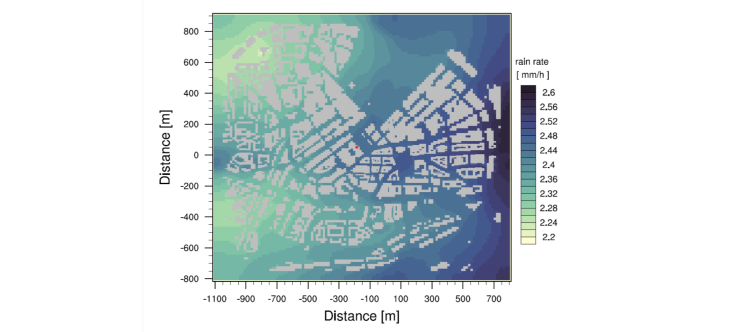Heterogeneous precipitation for homogeneous clouds between buildings
Everybody knows about the heterogeneities of rainfall between buildings by own experience. Not only may heterogeneous rainfall patterns cause discomfort, they also influence the performance and durability of building facades. Yet, high-resolution data of precipitation between buildings is scarce. To change that, the obstacle-resolving atmospheric model MITRAS was extended to investigate rain heterogeneities within the urban canopy. For this boundary conditions of cloud and rain water content at obstacle surfaces (roof, vertical walls) were introduced that consider at each grid cell boundary advection, diffusion, and sedimentation. At obstacle surfaces, there is no advection through the walls. For the diffusion close to obstacle surfaces, a specific building surface flux is calculated and used. The rain water reaching a roof by sedimentation is assumed to be collected on the roof. Thus, the simulation of the rain distribution at the local scale is possible.

Figure 1: Rain water content (rwc) after 1 minute of rain over the city of Hamburg. The red dot marks the City Hall.
As a proof of concept, a low homogeneous rain band is assumed over the area surrounding Hamburg City Hall. After 1 minute of rainfall, the rain has not yet reached the ground (fig. 1). The resulting pattern of the instant rain rate reveals small-scale heterogeneities (fig. 2) induced by the heterogeneous building structure and land use of the inner city.

Figure 2: Rain rate over Hamburg at the ground. The red dot marks the City Hall.
Preliminary results have been presented at the 12. Deutsche Klimatagung (DKT) and the EGU 2021.

